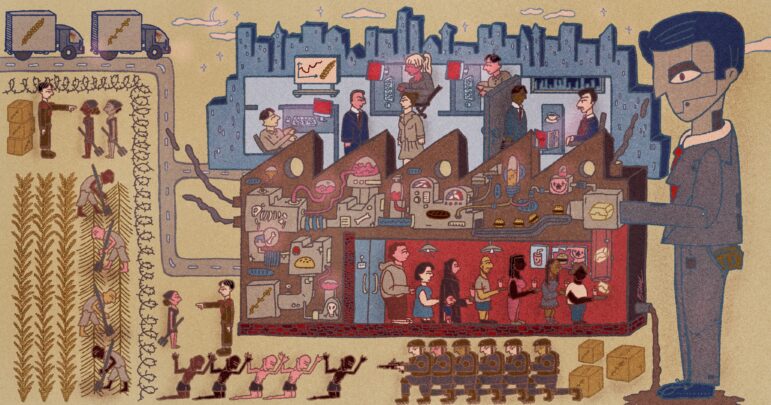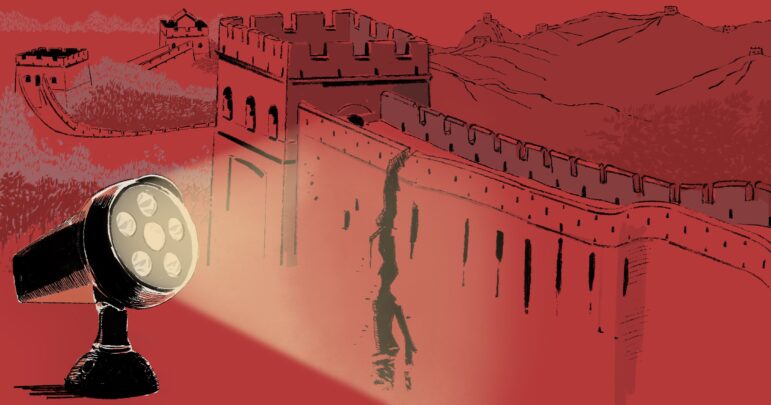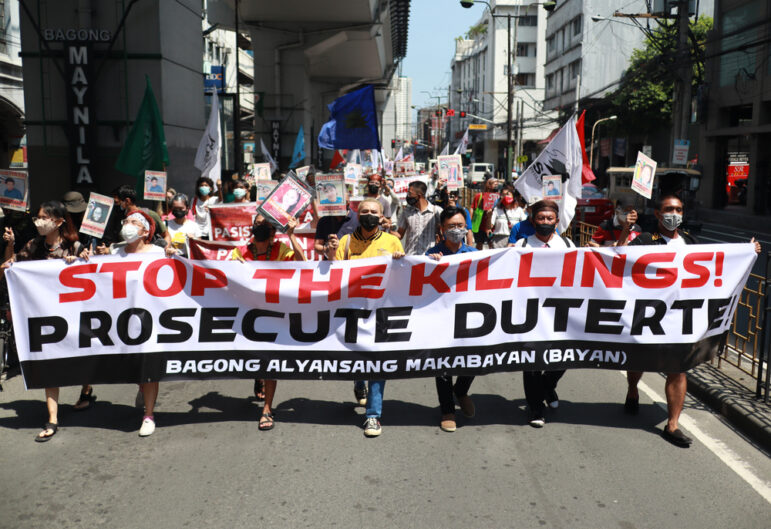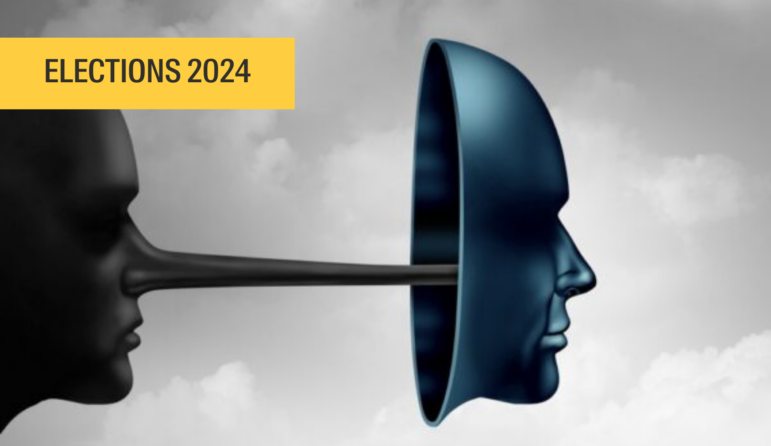

Kwaku Krobea Asante (right) presents information on fact-checking during Ghana's recent election, at a panel on fighting electoral disinformation campaigns at GIJC25. Image: Samsul Said, Alt Studio for GIJN
Innovative Strategies to Fight Electoral Disinformation Campaigns
Read this article in
Meet La Chama and El Pana.
Two AI-powered news anchors introduced themselves to reporters at the 14th Global Investigative Journalism Conference (GIJC25) in Malaysia. They were created not to spread disinformation, but to fight it.
“They (our editors) wanted to leverage the trust that the media outlets were willing to place in two avatars to disseminate the content,” one of the AI anchors said in a Venezuelan accent, explaining why they were built in a video showcased at the “Collaborating to Fight Electoral Disinformation Campaigns” panel.
Created by CONNECTAS, a Latin American investigative journalism network, AI-generated avatars La Chama and El Pana presented news to combat President Nicolás Maduro’s media crackdown during the 2024 presidential election. It was a response to the extreme hostility and censorship that journalists faced in the country. And it was one of the three projects showcased at the GIJC25 panel.
Venezuela: AI Anchors Protect Journalists, Fight Disinformation
At a time when AI-powered disinformation is spreading like wildfire on the internet, Carlos Eduardo Huertas, director of CONNECTAS, was showing ways to use the same technology to combat it. And the stakes in this battle are very real. The World Economic Forum’s “Global Risks Report 2025” identifies misinformation and disinformation as the top short-term risk over the next two years.
The AI avatars of La Chama and El Pana were part of the CONNECTAS effort, “Venezuela Vota” and “#LaHoraDeVenezuela”, to counter government disinformation and censorship. When traditional reporting became risky for reporters, they turned to AI. In all, 14 outlets, information platforms, and independent organizations worked together, using their own resources, to counter official propaganda during the election.
“AI could be a disturbing tool during the election process because it’s easy to create misinformation and disinformation and spread lies,” Huertas said to GIJN after the panel discussion. “But if the journalists can work together in innovative ways, they can use the artificial intelligence to protect journalism.”
Along with Huertas, Kwaku Krobea Asante, program manager at the Media Foundation for West Africa, and Sonia Bhaskar, program head at DataLEADS, shared strategies to fight disinformation campaigns in Ghana and India, respectively, where elections were held in 2024. Nayeli Roldán, a Mexican investigative reporter from Animal Politico, moderated the panel.
Ghana: Fact-Checking Coalition
In Ghana, during the 2024 election, members from Fact-Check Ghana, Ghana Fact, and Dubawa, combined to form the Ghana Fact-Checking Coalition. Asante said they brought in civil society organizations working on information integrity and resilience to join the collaboration.
The coalition created two media situation rooms — one in the northern and the other in the southern parts of Ghana in December 2024.
Covering elections becomes more challenging amid a spike in technology-powered disinformation campaigns, which spreads much faster. Launching these types of campaigns during elections undermine the outcome as well as voter trust in democratic institutions worldwide.
“When you try to work alone in silos, you achieve very little. And you may end up doubling the work that you have done in different ways,” Asante said. “When you join forces, you can reach more. You can get more in and address them.”
The coalition conducted live monitoring of narratives around the elections to spot misinformation, disinformation, and polarizing content, producing real-time fact-checking reports to counter the identified false narratives.
“We found coordinated networks engaging in disinformation astroturfing on X. And recycling of old photos and videos,” Asante explained.
Shakti: India Fact-Checking Collective
Back in India, as the 2024 general election was underway, Shakti: India Fact-Checking Collective, a consortium of 100-plus fact-checkers and news publishers in India, worked collaboratively to aid early detection of online misinformation and deepfakes.
More than 6,600 fact-checks were distributed and amplified across more than 10 languages, according to Shakti’s website. This effort was also supported by deepfake and synthetic media experts and lawyers, according to Bhaskar.
The effort was led by DataLEADS in collaboration with The Quint, Vishvas News, BOOM, Factly, and the Press Trust of India, among other leading fact-checking organizations and news publishers.
Making Collaboration Work
For effective collaboration, panelists highlighted the need for trust among members and for strategies to be clear to all.
“It is important to ensure there’s enough transparency on where funding is coming from, who is doing what exactly? What is the structure and flow of work?” Asante shared.
They also highlighted the need to assess the sustainability of the fact-checking initiatives.
“But if you’re able to… have plans in place that can sustain the work. It’s really important that it can help.” Asante said.
Traditional Journalism Skills Still Matter
Despite the tools available for AI detection, experts say old-fashioned reporting skills remain essential for fighting disinformation campaigns.
“The tools have evolved so much, the detection tools are really playing catch-up,” Bhaskar said to GIJN after the panel. “Detection tools can only help supplement, but they’re not good enough. We are very far away from our silver bullet.”
“We are still relying heavily on our journalistic skills,” she added.









